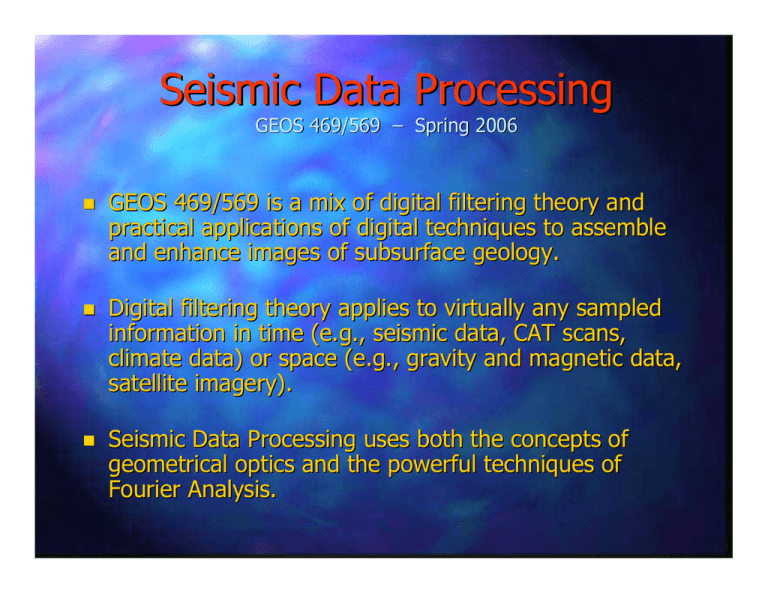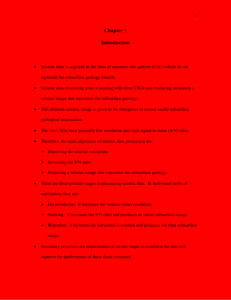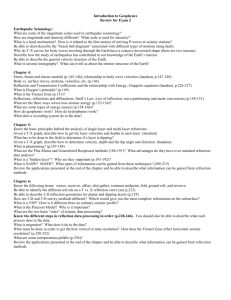Seismic Data Processing
advertisement

Seismic Data Processing GEOS 469/569 – Spring 2006 GEOS 469/569 is a mix of digital filtering theory and practical applications of digital techniques to assemble and enhance images of subsurface geology. Digital filtering theory applies to virtually any sampled information in time (e.g., seismic data, CAT scans, climate data) or space (e.g., gravity and magnetic data, satellite imagery). Seismic Data Processing uses both the concepts of geometrical optics and the powerful techniques of Fourier Analysis. Seismic Data Processing GEOS 469/569 – Spring 2006 Assumes knowledge of basic seismic reflection techniques and knowledge of trigonometry and calculus We will use complex numbers and some of the ideas of complex analysis as tools, but will develop these as we go. Same with Fourier Analysis Seismic Data Processing GEOS 469/569 – Spring 2004 Main tasks of seismic data processing are to: Correct for recording strategies and ray-path geometries Take advantage of the information that recording techniques provide Enhance S/N Provide the clearest possible image of the subsurface Digital Signal Analysis Goals: Analyze the “information content” of signals * Amplitude, Frequency & Phase Recognize noise and signal Provide the tools to increase resolution: * Broaden frequency spectrum * Filter noise * Improve signal characteristics Contribute to the “best” possible subsurface image Refraction & Reflection of Light Rays Analogous to seismic waves in layers of rock within the Earth. Convolutional Model of the Earth (1) For a single reflector, the seismogram we would record (with a coincident source and receiver) is simply the seismic wavelet scaled by the Reflection Coefficient, "hung off" the RC spike with some noise added. Convolutional Model of the Earth (2) Where more reflectors are present, the seismogram is the sum of the response of each individual reflector. Mathematically, this process is called convolution. Note that if we can “deconvolve” the seismic trace, we can recover the earth’s reflectivity function! We need to understand digital-signal-analysis techniques to be able to do this. Shot Record – Where It All Starts Simple Shot Record Many types of seismic arrivals are recorded, only some of which are used in subsurface reflection imaging. Travel times are recorded as a function of offset Shot Records Normal Moveout (NMO) is the result of how the data are acquired: travel times are recorded as a function of offset Corrections are applied to remove the NMO curvature of reflections Shot with NMO Correction CMP Stacking Common-MidPoint (CMP) Profiling permits “stacking of edited, NMOcorrected traces Addition of traces improves signalto-noise ratio (S/N) Shot Record in Color CMP Gathers CMP Gathers with NMO CMP Gathers with NMO and Mute Stacked Section (CMP “Stack”) Stacked Section (Color)






